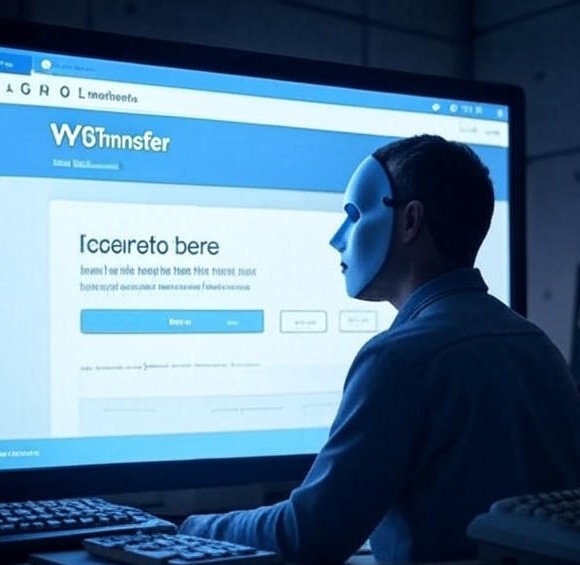 File-sharing platforms like WeTransfer, Dropbox, Google Drive, and OneDrive are convenient and trusted, which is exactly why scammers target them. Criminals send fake file-sharing notifications to trick you into revealing passwords, downloading malware, or opening dangerous documents.
File-sharing platforms like WeTransfer, Dropbox, Google Drive, and OneDrive are convenient and trusted, which is exactly why scammers target them. Criminals send fake file-sharing notifications to trick you into revealing passwords, downloading malware, or opening dangerous documents.
🔍 How the WeTransfer Scam Works
📩 Fake file-share notifications claiming to be from colleagues, clients, or companies.
⏳ Urgent messages like “Review this ASAP” to pressure quick clicks.
🎭 Links to counterfeit WeTransfer login pages to steal credentials.
💻 Malware hidden in the “shared file” download.
📉 Real-world case: In 2019, a WeTransfer breach accidentally sent files to the wrong recipients showing vulnerabilities scammers can exploit.
📂 Similar Scams on Other Platforms
📦 Dropbox
✉️ Phishing emails using fake Dropbox branding (“no-reply@dropbox-mail•com”) leading to credential theft or malware.
🔑 Stolen logins from past breaches used to send malicious files.
🏢 Fake HR messages about “benefits” or “payroll changes” carrying malicious links.
📄 Google Drive
📧 Bogus Google Doc notifications (“Project Proposal 2025”) leading to fake login pages.
🦠 Malware embedded in Google Docs or shared Drive files, bypassing email filters.
⚡ Urgent “Account locked” warnings to trigger impulsive clicks.
☁️ OneDrive
🔒 “Restricted file” tricks requiring sign-in on fake Microsoft pages.
💼 Business email compromise — hacked contacts share malicious files via legitimate OneDrive alerts.
📩 Fake IT emails claiming to be “OneDrive Security Updates.”
🚩 Red Flags
🚫 Unexpected file-sharing requests from unknown or off-domain senders.
⏰ Threats like “Act now or lose access!”
🌐 Links with look-alike domains (e.g., drive-login-secure•com).
✏️ Typos, bad grammar, or low-quality branding.
🔑 Requests for passwords, payments, or “storage upgrades.”
🛡 How to Stay Safe
👀 Verify the sender’s email address — hover over links before clicking.
📌 Go directly to the platform’s official website or app, never via email links.
🔐 Enable two-factor authentication on all file-sharing accounts.
🛠 Scan all downloads with reputable antivirus software.
🕒 Slow down if a message feels rushed or threatening.
📤 Report phishing emails to the platform and your email provider.
🛑 If You are Targeted or Compromised
🚷 Do not click or download anything suspicious.
🔑 If you entered credentials, change your password immediately on a safe device.
🧐 Check for unauthorized account activity.
📢 Report to the platform’s support team and relevant cybercrime authorities (e.g., FTC, CISA).
💡 Tip: For highly sensitive files, use services with true end-to-end encryption. WeTransfer, Dropbox, Google Drive, and OneDrive do not enable this by default.
- Log in to post comments
